FRTR Fall 2021 Meeting, Two Part Series on Remedy Protectiveness and Climate Resilience in Site Cleanups
Sponsored by: Federal Remediation Technologies Roundtable (FRTR)
Archived: Monday, November 8, 2021
Executive Order 14008, Tackling the Climate Crisis at Home and Abroad, sets forth U.S. policy to build resilience against the impacts of climate change. Federal agencies recently released associated action plans that describe steps the agencies are taking with regard to their facilities and operations to bolster adaptation and increase resilience to the impacts of climate change. Anticipating and recovering from the impacts of climate change will require all levels of government to work together.
The Fall 2021 meeting of the Federal Remediation Technologies Roundtable will focus on remedy protectiveness and climate resilience in site cleanups. The meeting will be held as a two-part webinar on Monday, November 8, and Monday, November 15, 2021. As always, FRTR meetings are open to the public.
FRTR's objectives for this meeting are to:
- Review the state of federal agency policies and directives on building climate resilience in context of site cleanups.
- Share information on federal agency approaches and tools to evaluate climate resilience and screen climate vulnerabilities of site cleanup projects.
- Review brief case studies demonstrating the steps being taken by federal agencies to assure remedy protectiveness in light of climate change impacts.
Agenda:
November 8, 2021, 1:00 to 3:30 PM (EDT)
- 1:00
- Meeting Opening
Kent Glover (FRTR Steering Committee Chair) - 1:05
- EPA Welcome
Speaker: Carlton Waterhouse, Deputy Assistant Administrator, EPA Office of Land and Emergency Management - 1:10
- Topic Introduction: Climate Resilience Meeting
Speaker: Carlos Pachon (EPA) - 1:20
- Efforts to Adapt to Climate Change Effects: Perspectives from the DOD Action Team
Speaker: Alicia (Wilson) Stenstrom (DOD) - 1:45
- Building Resilience Into the Superfund Program
Speaker: Carlos Pachon (EPA) - 2:00
- Break
- 2:05
- Agency Debriefs on Efforts and Guidance to Build Resilience into Cleanup Programs
- USACE: Kari Meier
- US Air Force: Kent Glover
- US DOE: Albes Gaona
- US DOT: Chris Zevitas
- US EPA: Carlos Pachon
- US Navy: Kim Brown
- USGS: Tanya Gallegos
- NIH/NIEHS: Heather Henry
- 2:35
- Current Research Priorities and Findings on Installation and Energy Resilience
Speaker: Herb Nelson (SERDP & ESTCP) - 2:50
- Superfund Research Program: Applying Climate Science and Resolving Climate Information Gaps
Speaker: Heather Henry (NIH/NIEHS) - 3:00
- Using Climate Projections for Local Risk Assessments
Speaker: Ryan P. Boyles (USGS Southeast Climate Adaptation Science Center) - 3:20
- Open Discussion: Commonalities and Leverage Across FRTR
Moderator: Carlos Pachon (EPA) - 3:30
- Adjorn
Upcoming FRTR Presents Series Webinars
FRTR Presents Series Archives
- FRTR Spring 2024 General Meeting: Artificial Intelligence and Machine Learning to Optimize Site Remediation (May 21, 2024)
- FRTR Presents...Recent Advances in PFAS Characterization Technologies (Feb 28, 2024)
- FRTR Fall 2023 General Meeting: Recent Advances in PFAS Characterization Technologies (Nov 7, 2023)
- FRTR Spring 2023 General Meeting: Best Practices and Recent Technical Advances in Site Characterization and Conceptual Site Model Development (May 16, 2023)
- Application of Robotics, Machine Learning and Artificial Intelligence Technologies to Site Remediation (Jun 13, 2022)
- Application of Robotics, Machine Learning and Artificial Intelligence Technologies to Site Remediation (Jun 6, 2022)
- FRTR Fall 2021 Meeting, Two Part Series on Remedy Protectiveness and Climate Resilience in Site Cleanups: Session 2 (Nov 15, 2021)
- FRTR Fall 2021 Meeting, Two Part Series on Remedy Protectiveness and Climate Resilience in Site Cleanups: Session 1 (Nov 8, 2021)
- FRTR at 30 Years: Grand Challenges and Opportunities for Advancing Remediation Technologies, Session 2 (May 26, 2021)
- FRTR at 30 Years: Grand Challenges and Opportunities for Advancing Remediation Technologies, Session 1 (May 19, 2021)
- FRTR at 30 Years: A Retrospective of Applied Innovative Technologies for Successful Site Remediation (Nov 18, 2020)
- FRTR Spring 2020 Meeting, Session 2: Bioremediation Advances - New Strategies, Optimization, and Performance Monitoring (Jun 5, 2020)
- FRTR Spring 2020 Meeting, Session 1: Bioremediation Advances - New Strategies, Optimization, and Performance Monitoring (May 29, 2020)
- FRTR Presents...Synthesizing Evolving Conceptual Site Models (CSMs) with Applicable Remediation Technologies (Apr 1, 2020)
- FRTR Presents...Modeling in Support of Site Remediation, Session 2 (Dec 4, 2019)
- FRTR Presents...Modeling in Support of Site Remediation, Session 1 (Nov 26, 2019)
- FRTR Presents...Per- and Polyfluoroalkyl Substances (PFAS) Emerging Characterization and Remedial Technologies, Session 2 (Sep 26, 2019)
- FRTR Presents...Per- and Polyfluoroalkyl Substances (PFAS) Emerging Characterization and Remedial Technologies, Session 1 (Jun 20, 2019)
- FRTR Presents...Evolution of Subsurface Remediation: Lessons Learned from Technical Challenges to Achieving Cleanup Goals - Part 2 (Oct 17, 2018)
- FRTR Presents...Evolution of Subsurface Remediation: Lessons Learned from Technical Challenges to Achieving Cleanup Goals - Part 1 (Sep 27, 2018)
- FRTR Presents...Remediation Technologies for Radionuclides and Heavy Metals in Soil, Ground Water and Sediments, Session 2 (Mar 28, 2018)
- FRTR Presents...Remediation Technologies for Radionuclides and Heavy Metals in Soil, Ground Water and Sediments, Session 1 (Feb 28, 2018)
- FRTR Presents...Heavy Metals-Mining Site Characterization and Treatment Session 3 (Aug 10, 2017)
- FRTR Presents...Heavy Metals-Mining Site Characterization and Treatment Session 2 (Jul 26, 2017)
- FRTR Presents...Heavy Metals-Mining Site Characterization and Treatment Session 1 (Jul 10, 2017)
- An Introduction to Green and Sustainable Remediation: What, Who, Why, and How (Jun 10, 2015)
- FRTR Presents: Large-Dilute Plumes: Challenges and Opportunities (May 1, 2013)
Accessibility, Recording, and Content Disclaimer
Rehabilitation Act Notice for Reasonable Accommodation
It is EPA's policy to make reasonable accommodation to persons with disabilities wishing to participate in the agency's programs and activities, pursuant to the Rehabilitation Act of 1973, 29 U.S.C. 791. Any request for accommodation should be made to Cindy Frickle at 202-566-0927 or frickle.cynthia@epa.gov, preferably one week or more in advance of the webinar, so that EPA will have sufficient time to process the request. EPA would welcome specific recommendations from requestors specifying the nature or type of accommodation needed. Please note that CLU-IN provides both alternate phone call-in options and closed captioning for all webinars, and requests for these specific accommodations are not necessary.
Webinar Recording
By participating in this CLU-IN webinar, you automatically agree to authorize recording of audio and visual content presented during this live event and consent to subsequent use of this recording in the public domain by the U.S. Environmental Protection Agency. This recording may include questions, comments and poll responses provided by you during the live event in addition to your name, voice, image or likeness. This recording will be made available after the conclusion of the live event as part of the CLU-IN webinar archives, and will remain available indefinitely. If you do not wish to consent to the recording, please do not join the live event, and contact Jean Balent at 202-566-0832 or balent.jean@epa.gov to discuss your concerns.
Content Disclaimer
This webinar is intended solely to provide information to the public. The views and opinions expressed as part of this webinar do not necessarily state or reflect those of the U.S. Environmental Protection Agency. It is not intended, nor can it be relied upon, to create any rights enforceable by any party in litigation with the United States, or to endorse the use of products or services provided by specific vendors. With respect to this webinar, neither the United States Government nor any of their employees, makes any warranty, express or implied, including the warranties of merchantability and fitness for a particular purpose, or assumes any legal liability or responsibility for the accuracy, completeness, or usefulness of any information, apparatus, product, or process disclosed, or represents that its use would not infringe privately owned rights.
Presenters:
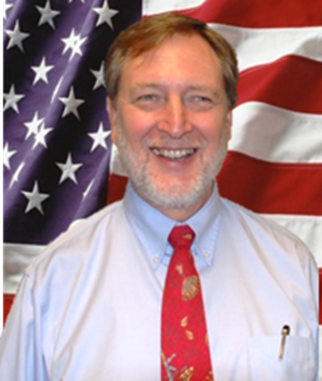 Kent Glover, Ph.D., U.S. Air Force Civil Engineer Center (AFCEC) (kent.glover@us.af.mil)
Kent Glover, Ph.D., U.S. Air Force Civil Engineer Center (AFCEC) (kent.glover@us.af.mil)
Dr. Glover has been involved in groundwater and vadose zone remediation since the early 1980s. Currently, he is the Air Force Subject Matter Expert (SME) for Remediation Systems and provides technical leadership in remedy selection, implementation, performance evaluation and optimization. He also provides expertise in numerical modeling of contaminant fate and transport, and remediation of non-aqueous phase liquids. Before coming to the Air Force in 2010, he was a Principal Scientist for several engineering firms providing consulting services to private sector and governmental clients. From 1976 until 1989, he served in the U.S. Geological Survey as a hydrologist for groundwater contamination and water resources projects across the western United States. He holds a Ph.D. and M.S. in Environmental Science and Engineering from Colorado School of Mines and a B.S. in Watershed Science from Colorado State University.
Carlton Waterhouse, Ph.D., Deputy Assistant Administrator, EPA Office of Land and Emergency Management
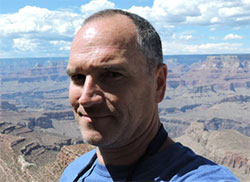 Carlos Pachon, U.S. EPA Office of Superfund Remediation and Technology Innovation (pachon.carlos@epa.gov)
Carlos Pachon, U.S. EPA Office of Superfund Remediation and Technology Innovation (pachon.carlos@epa.gov)
Carlos manages EPA's Brownfields and Land Revitalization Technology Support Center which has an overall goal of advancing best practices and new technologies in cleaning up Brownfield sites. The Brownfields Road Map is a product of the BTSC, which in turn is a collaborative effort between the Superfund Program and the Office of Brownfields and Land Revitalization. Carlos has a broad cross-program perspective on innovative practices in site assessment and cleanup, and he generates and manages knowledge and information on the use of technologies in the Superfund Program. He is currently leading a cross-Agency effort to advance EPA's Principles for Green Remediation.
In recent years he has held other positions including Deputy Director for Environmental Reviews with the United States Trade Representative, and as a special assistant to EPA Administrator Johnson. He has a BS from Colorado State University in Watershed Management and graduate degrees in Environmental and Management from Duke University and an MBA from Georgetown University in DC.
Alicia (Wilson) Stenstrom, U.S. DOD
Dr. Kari Meier, USACE EM CX (kari.l.meier@us.army.mil or 502-315-6316)
Dr. Kari Meier has twelve years' experience in environmental chemistry and project management with the US EPA and USACE. She earned a Ph.D. in Earth and Atmospheric Sciences, Atmospheric Chemistry, from the Georgia Institute of Technology, a M.S. in Chemistry from the University of Arkansas, and a B.S. in Chemistry from Hendrix College. As an environmental Chemist, Dr. Meier has managed FUDS, Active Army, and Superfund Projects, both traditional HTRW and MMRP. She has received numerous personal recognitions from the USACE for her leadership and completion of projects. She now works directly for the Military Munitions Division of the USACE Environmental and Munitions Center of Expertise. Dr. Meier is focused to support project planning for MMRP. She is responsible assisting districts in managing data and processes for completion of all Munitions Response Site Prioritization Protocol (MRSPP), developing remedial action objectives (RAOs), and use regarding limitations of Munitions and Explosives of Concern Hazard Assessment (MEC HA) methodology. She conducts quality reviews for CERCLA project documents, and serves as a technical expert, point of contact, for USACE districts. She serves on the Department of Defense Environmental Data Quality Workgroup (EDQW) as a proponent to develop performance measurements and implementation of Uniform Federal Policies for environmental and munitions programs, and continues to support work for the Military Munitions Support Services.
Albes Gaona, U.S. DOE
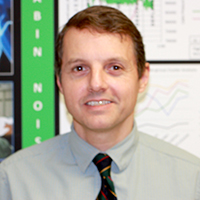 Chris Zevitas, U.S. DOT
Chris Zevitas, U.S. DOT
Dr. Christopher Zevitas is a nationally-recognized subject matter expert with over 36 years of experience in the Departments of Defense and Transportation managing and directing comprehensive environmental assessment, mitigation, and restoration activities. He serves as a senior technical advisor to the Federal Aviation Administration’s National Environmental Cleanup Program with a focus on evaluating the impact of pollutants at airports and other complex sites. Dr. Zevitas also leads major inter and intra agency initiatives addressing the nation’s top priorities concerning novel pollutants and emerging threats to human health and the environment through his participation in expert committees, such as the White House Joint Subcommittee on Environment, Innovation, and Public Health, the Transportation Research Board, Federal Remediation Technology Roundtable, and the Interstate Technology and Regulatory Council. Dr. Zevitas holds a Doctor of Science (Sc.D.) degree in Environmental Health from the Harvard T.H. Chan School of Public Health, an M.S. in Civil and Environmental Engineering from Northeastern University, and a B.S. in Electrical Engineering from the University of Massachusetts – Lowell.
Kim Brown, U.S. Navy
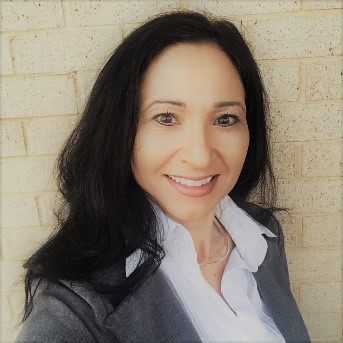 Tanya J. Gallegos, USGS
Tanya J. Gallegos, USGS
Tanya J. Gallegos is a research engineer at the U.S. Geological Survey in Reston, VA. She received a Ph.D. in Environmental and Water Resources Engineering from the University of Michigan. She is a registered Professional Engineer in the State of New Mexico. Her research encompasses inorganic geochemistry, naturally occurring radioactive materials, water use in hydraulic fracturing, environmental impacts of uranium mining, and waste as a resource at abandoned mines.
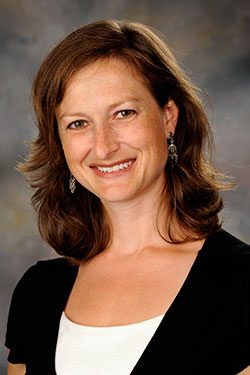 Heather F. Henry, Ph.D., Program Administrator, NIEHS Superfund Research Program (heather.henry@nih.gov)
Heather F. Henry, Ph.D., Program Administrator, NIEHS Superfund Research Program (heather.henry@nih.gov)
Heather Henry, Ph.D., is a health science administrator for the NIEHS where she oversees Superfund Research Program (SRP) grants that spans human health toxicology, risk assessment, detection technologies and remediation approaches. She provides guidance to potential applicants for SRP’s Multiproject Center Grants (P42s), Individual Research Grants (R01s), Small
Business / Technology Transfer Grants (R41-44; SBIR/STTR), and Conference Grants (R13). Heather studied plant-based environmental remediation
(phytoremediation) and ecological restoration as part of her doctoral work at the University of Cincinnati and as a Fulbright Postdoctoral Fellow at the University of Melbourne and University of Adelaide in Australia. She has been with NIEHS since 2006.
Herb Nelson, U.S. Environmental Protection Agency
Ryan P. Boyles, USGS Southeast Climate Adaptation Science Center
Moderators:
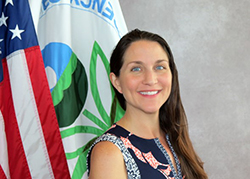 Jean Balent, U.S. EPA Technology Innovation and Field Services Division (balent.jean@epa.gov or 202-566-0832)
Jean Balent, U.S. EPA Technology Innovation and Field Services Division (balent.jean@epa.gov or 202-566-0832)
Ms Balent is on the staff of the EPA's Technology Innovation and Field Services Division where she has worked to collect and disseminate hazardous waste remediation and characterization information since 2003. Ms Balent manages the Clean Up Information Network website and actively supports online communication and collaboration resources available to EPA. She formerly worked with the US Army Corps of Engineers Environmental Engineering Division in the Buffalo District. Ms Balent was also a member of the SUNY-Buffalo Groundwater Research Group where she constructed and tested large scale models of groundwater flow. Ms Balent has also conducted research relating to the Great Lakes, environmental remediation, and brownfields re-development. She holds a Bachelor's degree in environmental engineering from SUNY-Buffalo and a Master's degree in Information Technology from AIU.
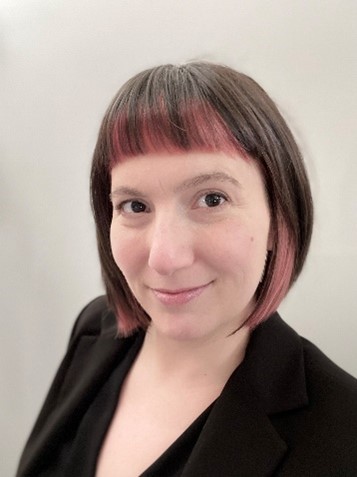 Cindy Frickle, U.S. EPA Office of Superfund Remediation and Technology Innovation (frickle.cynthia@epa.gov or 202-566-0927)
Cindy Frickle, U.S. EPA Office of Superfund Remediation and Technology Innovation (frickle.cynthia@epa.gov or 202-566-0927)
Cindy Frickle is a physical scientist with EPA's Superfund program where she reviews and propagates technical information to site cleanup professionals through Clu-In, EPA forums, and interagency channels. Prior to joining EPA, she spent time characterizing contaminated sites, coring sediments, studying microbes, and teaching. She completed her Biogeology MS and Geology BS in the University of Minnesota's School of Earth Sciences.
Webinar Slides and References:
Slides for Session 1
Webinar Slides and References:
Slides for Session 1
- Slide Presentation for Carlos Pachon; U.S. EPA
- Slide Presentation for Alicia Stenstrom; DOD
- Slide Presentation for Carlos Pachon; U.S. EPA
- Slide Presentation for Herb Nelson; U.S. EPA
- Slide Presentation for Heather Henry, Ph.D.; NIEHS
- Slide Presentation for Ryan Boyles; USGS
Additional Resources:
- Federal Remediation Technologies Roundtable (FRTR)
- Remedy Protectiveness and Climate Resilience in Site Cleanups: Policies, Guidance and Implementation Tools
- NIEHS Superfund Research Program Publications - 2021 Series on "Remedy Protectiveness and Climate Resilience in Site Cleanups."
- Climate Resilience Technical Fact Sheet: Contaminated Sediment Sites
- Climate Resilience Technical Fact Sheet: Contaminated Waste Containment Systems
- Climate Resilience Technical Fact Sheet: Groundwater Remediation Systems
- Department of Energy's Technical Resilience Navigator
- Department of Energy's Climate Adaptation and Resilience Plan
- NIEHS Climate Change and Human Health Webpage and Literature Portal
If you have a suggested topic or idea for a future CLU-IN internet seminar, please contact:
Technology Integration and Information Branch
PH: 202-566-0832 | Email: balent.jean@epa.gov
Technology Integration and Information Branch
PH: 202-566-0875 | Email: adam.michael@epa.gov





